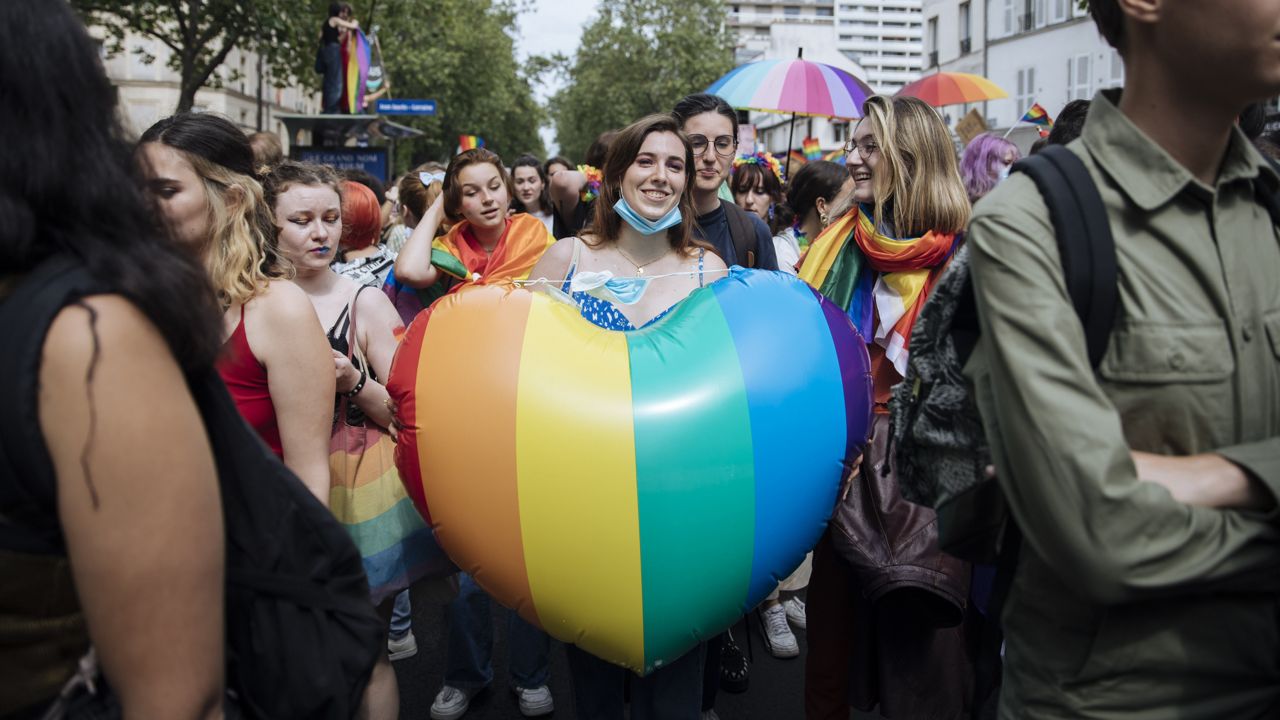Young Americans in the LGBTQ+ community experience homelessness at a higher rate than their peers – an issue that in turn increases mental health issues compared to their stably-housed peers, according to a new report from The Trevor Project.
Adolescents have faced a growing mental health crisis in recent decades, one that was exacerbated at the start of the coronavirus pandemic and that has particularly impacted marginalized or minority groups.
The Trevor Project, a nonprofit centered on suicide prevention and mental health awareness for LGBTQ+ youth, conducted its 2021 National Survey on LGBTQ Youth Mental Health with data gleaned from over 35,000 LGBTQ youth between the ages of 13–24 across the country.
According to the group’s research, over one in four – or 28% – of LGBTQ adolescents have experienced homelessness or housing instability at some point in their lives. That number nearly doubled for Native or Indigenous LGBTQ youth, nearly 44% of whom have been homeless or housing instability.
LGBTQ youth experience higher rates of homelessness for a variety of reasons. One government study of 350 homeless or runaway LGBTQ youths found four leading causes: the individual’s family rejects them due to gender identity or sexual orientation; a form of physical, emotional, sexual or mental abuse; a form of neglect or aging out of the foster care system.
Those findings were reflected in the Trevor Project’s report, which found that over 40% of LGBTQ respondents experienced homelessness after being “kicked out or abandoned due to their LGBTQ identity”; a separate 16% said they ran away from home, over half of whom said they left due to mistreatment or fear of mistreatment or abuse because of their sexual orientation or gender identity.
The higher rates of homelessness were closely associated with increased risk of mental health problems or suicidal ideations, according to the Trevor Project.
Over 69% of young adults in the LGBTQ community who reported experiencing homelessness in the year prior said they had engaged in some form of self-harm, compared to 49% of their peers who had not experienced housing instability. LGBTQ youth who experienced homelessness were between two to four times more likely to report feelings of depression, anxiety, self-harm, suicidal ideation or attempts to die by suicide.
Experts in the U.S. have for months warned that adolescents are undergoing an “alarming” and “widespread” mental health crisis, an uptick that was already in motion before the coronavirus pandemic took hold.
Marginalized students were (and remain) at an increased risk of experiencing mental difficulties without having access to adequate care. Officials from the Department of Education recently stated: “To be clear, racism, not race, is a critical risk factor for mental health concerns and poorer outcomes.”
Compounding barriers to mental health support include a student’s socioeconomic and housing status. Even before the pandemic, youth who experienced homelessness were both more likely to experience mental health issues, but less likely to seek help for those problems. Food insecurity is also closely associated with heightened instances of mental health issues; as access to healthy food became increasingly difficult during the pandemic, experts noted an uptick in adolescent mental health problems.
“When you start adding homophobia, plus racism or transphobia, plus anti-Indigenous racism … then we again start to see that young people who are experiencing multiple forms of marginalization and oppression — those are the folks who tend to be pushed out of housing supports and experiencing homelessness,” Jonah DeChants, a researcher at the Trevor Project and author of the study, told NBC News in part.
The reasons for the disparities are vast, and range across various demographics: For example, the increased rates of hate crimes against Asian Americans may contribute to increased mental health issues for that demographic; darker-skinned Latino status tend to experience racial discrimination at higher rates than lighter-skinned Latinos, while Non-Hispanic Black, female, and LGBTQI+ students experienced the “highest risk of increases in depression symptoms” since March 2020.
The Trevor Project proposed a number of possible solutions to the growing crisis, one being to prevent youth homelessness altogether through a mix of social support and anti-discrimination policies. The group also suggests increased funding for low-income housing programs, revamped shelter services and better data collection on homeless LGBTQ+ youth.
If you or someone you know needs help, please call the National Suicide Prevention Lifeline at 800-273-8255, or text HOME to 741741 for support from the Crisis Text Line.



